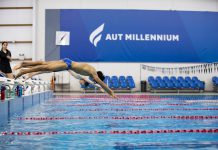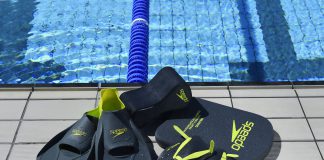One of the limiting factors that occurs as we age is that our joints and surrounding tissues (such as tendons and ligaments) can no longer tolerate, or match, the same loads as our muscles. After the years go by, our joints tend to wear and break down at a faster rate than our muscle tissue. This can lead to increased injury potential as we lift heavy loads in our workouts.
Can we get the same or similar effect by simply lowering the load and performing more repetitions?
What we know from muscle growth physiology is that we need to induce enough mechanical or metabolic stimuli in order to stimulate muscle hypertrophy (growth).1 Think of mechanical stimuli as the external load, thus lifting a heavy weight would increase mechanical tension compared to a light weight. Think of metabolic stimuli as how hard the muscle is working, thus sprinting would increase metabolic stress compared to walking. There is evidence to suggest it typically takes at least 12-16 weeks working at 60-80% of 1RM (one-repetition maximum) to induce muscle hypertrophy.2 However, muscle hypertrophy can also be attained if working at lower loads (30-50% of 1RM) until failure. It is the relationship between mechanical and metabolic stimuli that can explain this – metabolic stress can make up for low mechanical tension to still induce positive muscle gains.
What this means is that we can get similar muscular hypertrophy results using lower weight loads and higher repetitions – as long as the intensity effort is high. This reduces the amount of load to the surrounding joints.
For a measurement of effort, we use what is called Rate of Perceived Exertion or RPE. What this means is how difficult or hard you feel your last few repetitions are in any given exercise set. Typically we use a 1-10 scale, with 1 being extremely light or easy, and 10 being extremely heavy or hard. So, with our previous example of using lighter weight for more repetitions but with a higher effort, it would mean by the end of a set of say 15 reps it should feel like an 8-9 out of a 10.
What does this mean in terms of how many repetitions to use? Generally, we would aim for 1-6 repetitions for strength gains, 6-12 reps for hypertrophy gains, and 12-20+ reps for muscular endurance gains. But, as we discussed earlier, you can receive same or similar hypertrophy gains in the higher repetition ranges. Remember, we are avoiding the lower rep ranges for the purpose of reducing the loads on our joints. Therefore, my recommendation would be to strive to stay in the 10-15+ repetition range to avoid heavy loads on your joints and use an RPE level of 6-10.
A word about strength. Yes, with higher rep ranges (beyond 1-6 reps) you can and will still gain more strength. The lower reps range is a bit more favourable for maximal strength, but the strength you will gain in the higher reps range will be sufficient for most of us. So unless you are a competitive weightlifter or powerlifter, you need not venture into the lower rep ranges with maximal loads.
As we age our joints become less tolerable to the forces of heavy weights lifted in our workouts. By lifting less weight but using more repetitions with a higher level of effort, we can experience the desired results of more strength and muscle size, but with less potential damage to our joints and surrounding tissues. This doesn’t just apply to the ageing athlete or fitness enthusiast, it also applies to our younger generation.
Fitness longevity is about exercising for the long-term, which means not excessively breaking down our joints along our fitness journey.
References:
- Ozaki H, Loenneke JP, Buckner SL, et al. Muscle growth across a variety of exercise modalities and intensities: contributions of mechanical and metabolic stimuli. Med Hypotheses. 2016;88:22–6.
- Garber CE, et al. American College of Sports Medicine position stand. Quantity and quality of exercise for developing and maintaining cardiorespiratory, musculoskeletal, and neuromotor fitness in apparently healthy adults: guidance for prescribing exercise. Med Sci Sports Exerc.2011 Jul;43(7):1334-59. doi: 10.1249/MSS.0b013e318213fefb.






































